Imagine you’re in the Roaring Twenties, either sporting a newsboy cap (the original kind) or a sleek, short hairdo and a tassled dress. What is it you’re doing in that moment?
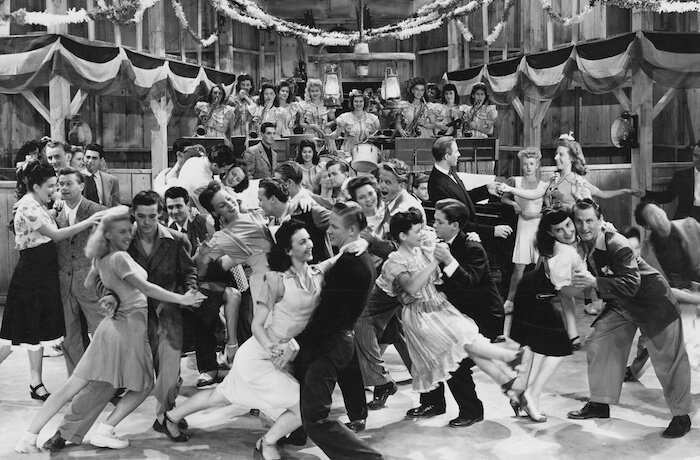
If your memory serves you correctly, you’d most definitely be dancing! The ‘20s are most-remembered in U.S. history for the high-energy dancing and the impact it had on our country’s culture. Plus, the fashion and beauty styles back then were pretty interesting too.
But let’s not forget the other decades that danced their way through time. Each decade in the past centennial has had its own dancing identity, so today we’re going to take you a few quick steps through the ways dancing has continued to define American culture (and its good-hearted pastimes!).
10 Decades of Dancing in the USA
1920’s – Swing Dancing
 As we mentioned above, social dance was a high point in the ‘20s. Specfically, swing dancing in the latter half of the decade. During this time, it was common to step into a “swing scene,” enjoy dancing to Big Band music and chat and laugh with friends. What was so special about swing during this moment in American history was the fact that it brought touch back to the dance floor.
As we mentioned above, social dance was a high point in the ‘20s. Specfically, swing dancing in the latter half of the decade. During this time, it was common to step into a “swing scene,” enjoy dancing to Big Band music and chat and laugh with friends. What was so special about swing during this moment in American history was the fact that it brought touch back to the dance floor.
Swing dancing is about as social as it gets, which is why it’s so fun to learn (and teach). If the feeling of swinging around the dance floor sounds like a dream, you’re going to love this iconic American jazz variation.
1930’s – Moonwalk
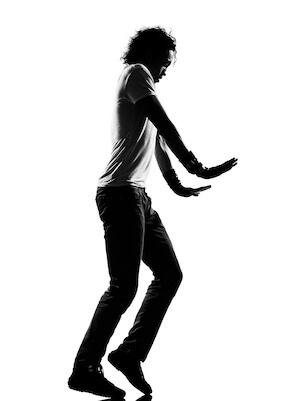 What if you were dancing when the Moonwalk was the move of choice? That was the case in the ‘30s after the Jive died down in the early part of the decade. And if you’re shaking your head, thinking the Moonwalk was created by Michael Jackson, think again—this move, though called “The Buzz” at the time, was first stepped by Jazz icon Cab Calloway as early as 1932.
What if you were dancing when the Moonwalk was the move of choice? That was the case in the ‘30s after the Jive died down in the early part of the decade. And if you’re shaking your head, thinking the Moonwalk was created by Michael Jackson, think again—this move, though called “The Buzz” at the time, was first stepped by Jazz icon Cab Calloway as early as 1932.
Calloway regularly performed at the famous Cotton Club in Harlem, and others like him also showed off their fancy footwork now known as the Moonwalk.
1940’s – Mambo and East Coast Swing
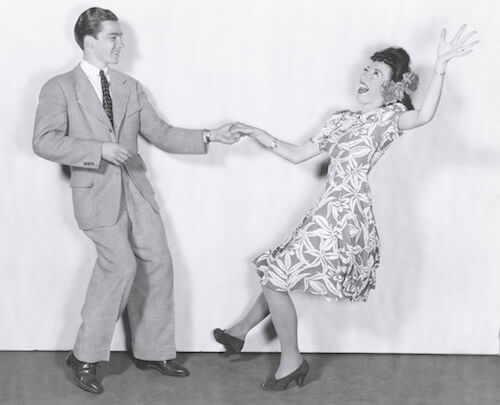 The ‘40s were very much alive with dancing and movement, so much so, in fact, that there is not one particular dance style that categorizes this decade. Remember that this time period was difficult for America—it came off the heels of The Great Depression, which spanned the entire ‘30s, and then catapulted into World War II in 1941. Americans needed a way to relieve their stress, and one of the best ways to do that to this day is to dance, of course!
The ‘40s were very much alive with dancing and movement, so much so, in fact, that there is not one particular dance style that categorizes this decade. Remember that this time period was difficult for America—it came off the heels of The Great Depression, which spanned the entire ‘30s, and then catapulted into World War II in 1941. Americans needed a way to relieve their stress, and one of the best ways to do that to this day is to dance, of course!
In the ‘40s, the Mambo rose to popularity (think of Lou Bega’s catchy tune, “Mambo Number 5”) thanks to the Cuban dance style reaching America’s dance floors. In addition to the Mambo, East Coast Swing also took the spotlight, which featured dances like the Modern Jive, Boogie Woogie, Rock and Roll, and Collegiate Shag. All these fun styles are social and quick and surely lifted the spirits of Americans at home during such a storied section of world history.
1950’s – Hand Jive and Cha Cha
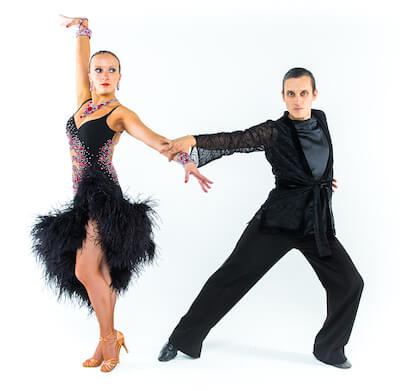 By the time the mid-century rolled around, people began taking the Jive to their hands, quite literally dancing with their hands in fast movements. Contemporary dance was also starting to come on the scene, which would be the beginning of non-swing styles as we know them today.
By the time the mid-century rolled around, people began taking the Jive to their hands, quite literally dancing with their hands in fast movements. Contemporary dance was also starting to come on the scene, which would be the beginning of non-swing styles as we know them today.
From that point, the Mambo and Rumba were combined to create the Cuban Cha Cha, which is a simple dance anyone can learn. The Cha Cha generally features triple steps called Chasse and rock steps. The ‘50s mark an interesting pivot in America’s dance culture as well as social culture.
1960’s – Locking, Popping, and Robot-ing
 Going through the decades, you can see how people become more creative and willing to try new things as dancing gained popularity. In the ‘60s, Swing dancing still had a strong grip, but other styles such as Detroit Ballroom, Locking, and Popping also become normal. Oh, and the jolty, rigid Robot Dance also became commonplace.
Going through the decades, you can see how people become more creative and willing to try new things as dancing gained popularity. In the ‘60s, Swing dancing still had a strong grip, but other styles such as Detroit Ballroom, Locking, and Popping also become normal. Oh, and the jolty, rigid Robot Dance also became commonplace.
Popping, different from Locking and Breaking, is one of the earliest forms of funk. Locking is similar but very different if you know your hip hop moves. Speaking of which, these styles from the ‘60s are still popular in hip hop dancing today, showing that great moves can transcend time and cultural barriers.
1970’s – Disco, Chicago Stepping, and Salsa
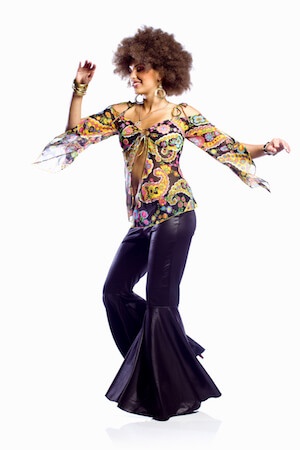 Talk about a freely moving 10 years! The ‘70s were not shy in terms of music, dance clubs, and movement. Many people are probably familiar with the big surge in Disco Dancing, but Chicago Stepping and Salsa were also notable dance forms (among a few others) that captivated society and inspired people to get on their feet.
Talk about a freely moving 10 years! The ‘70s were not shy in terms of music, dance clubs, and movement. Many people are probably familiar with the big surge in Disco Dancing, but Chicago Stepping and Salsa were also notable dance forms (among a few others) that captivated society and inspired people to get on their feet.
With Studio 54’s iconic disco scene in New York City, there’s no doubt that this decade has also played a large part in the beginning stages of the nightclub scene (speaking of which, have you danced the night away at any of these New Jersey nightclubs?). The music style also included more suggestive moves like hip gyrations (does the Hustle ring a bell?), and the overall disco culture overflowed into American values, freeing people of inhibitions they may have had. We can thank today’s house and electronic music for its humble beginnings in the beats of disco tunes.
1980’s – Rock and Roll
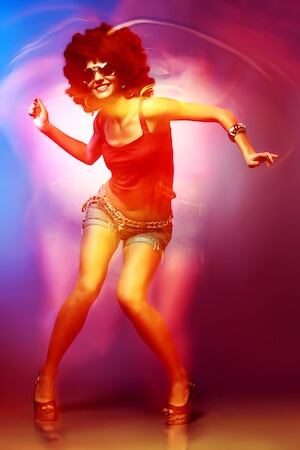 At the height of rock and roll, the dancing matched its music. People began Moshing in mosh pits as well as Jacking, which is a simple back-and-forth body move that many people still do today when they listen to EDM. Another American dance style in the ‘80s was known as Voguing, which basically had dancers envisioning they were Egyptian hieroglyphs or highly stylized models making dramatic shapes with their bodies.
At the height of rock and roll, the dancing matched its music. People began Moshing in mosh pits as well as Jacking, which is a simple back-and-forth body move that many people still do today when they listen to EDM. Another American dance style in the ‘80s was known as Voguing, which basically had dancers envisioning they were Egyptian hieroglyphs or highly stylized models making dramatic shapes with their bodies.
In its oldest, purest form, Voguing would actually pit two dancers in a duel against each other, and one would win by “pinning” the other in a corner to a point where the opponent could no longer move while the other continued to dance.
1990’s – Zumba and Memphis Jookin’
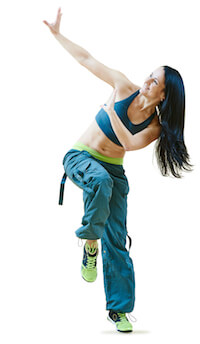 If you haven’t believed us about dancing help you lose weight, take a quick trip down memory lane back to the ‘90s when Zumba took the fitness world by storm. The dance class was created Colombian dancer and choreographer Alberto “Beto” Perez as an exercise program, and it spread like wildfire through gyms and homes across America.
If you haven’t believed us about dancing help you lose weight, take a quick trip down memory lane back to the ‘90s when Zumba took the fitness world by storm. The dance class was created Colombian dancer and choreographer Alberto “Beto” Perez as an exercise program, and it spread like wildfire through gyms and homes across America.
To balance this aerobic workout, hip hop moves continued their rise. Memphis Jookin’, for example, became a big player in many rappers’ acts during this decade that the rap music genre made a name for itself.
2000’s – Krumping and Electro Dance
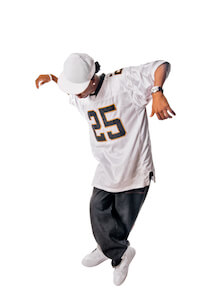 We continue to see hip hop’s influence on dancing through the millennium, when Krumping becomes a dance floor favorite. In case you need a refresher, Krumping first started as a Los Angeles street dance that was highly energized with jolty body movements. It basically personified the 2000’s.
We continue to see hip hop’s influence on dancing through the millennium, when Krumping becomes a dance floor favorite. In case you need a refresher, Krumping first started as a Los Angeles street dance that was highly energized with jolty body movements. It basically personified the 2000’s.
The 2000’s were also characterized by the ever-increasing interest in electronic music. Electro Dance, then, was a mix of many of the dance styles spanning the past few decades, combining Vogue moves with Disco and even adding in freestyle glow stick moves. Deep beats gave Americans a reason to get on their feet!
2010’s – A Little Bit of Everything
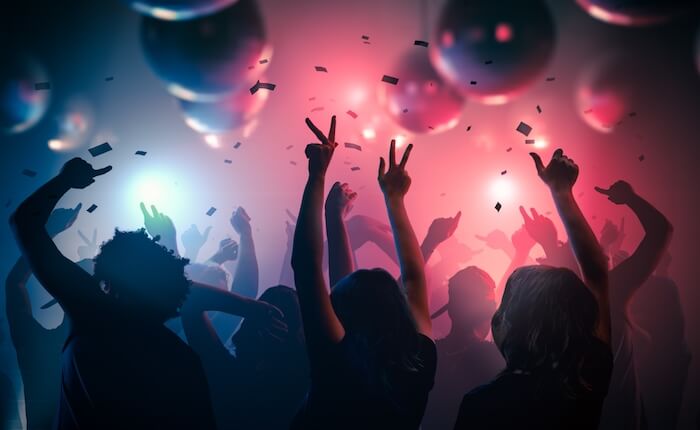 We made it to our current decade! Many of today’s popular dances tend to be trends pulled from either YouTube videos or music artist’s own music videos. The creation of new dances happens frequently with group and line dances such as Gangnam Style, Single Ladies, and even Flash Mobs.
We made it to our current decade! Many of today’s popular dances tend to be trends pulled from either YouTube videos or music artist’s own music videos. The creation of new dances happens frequently with group and line dances such as Gangnam Style, Single Ladies, and even Flash Mobs.
The 2010’s can perhaps be best explained by the large influences of various dances our culture has absorbed and tweaked over the past 100 years. When you look at the dance floor, you will see a mix of hip hop dancers, line dancers, and straight-up freestylers, and we think this is an amazing representation of the way dance has evolved and shaped America through the years.
Don’t forget you can learn lots of these awesome dances right here, this year, in New Jersey! We offer a free first dance class, so check out which dances we teach and let us know when you’re ready to see for yourself why our culture loves dancing so much.
{{cta(‘a7d6e4e1-a911-4f2b-8b43-6210da6d93fb’)}}
Leave a Reply